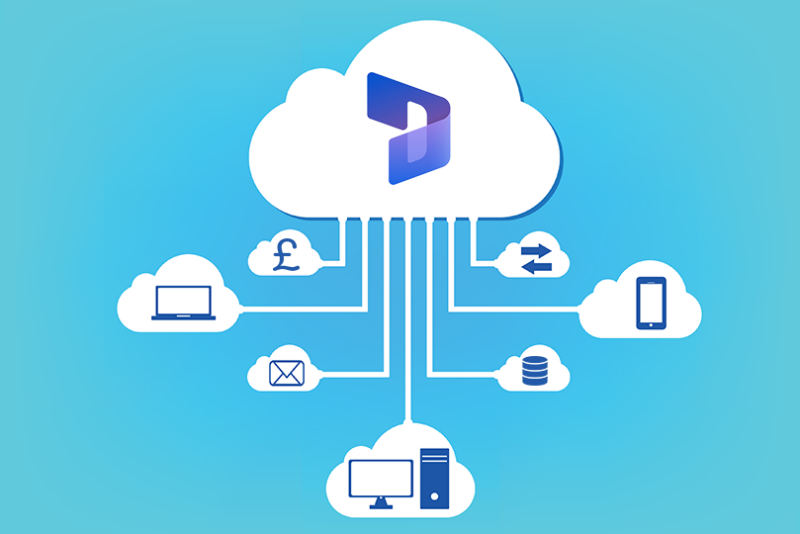Cloud computing has been game-changing for businesses of all sizes. It has allowed larger organisations to scale resources on-demand to meet increasing needs, while smaller firms can expand their infrastructure and computing capabilities without the burden of significant hardware investments and associated costs.
Cloud costs were promised to be straightforward in the past. Instead of facing a hardware refresh every five years, a subscription model with regular, predictable costs was possible.
This shift allowed companies to move from capital expenditure (CapEx) to operational expenditure (OpEx), promising easier budgeting with regular monthly payments instead of substantial upfront costs. What’s more? There’s no separate maintenance contract, as it’s all wrapped up in a single contract.
However, it turned out to be less straightforward than initially anticipated. With cloud usage came a myriad of ways people could overprovision resources and pay for more than they need.
How can organisations avoid their cloud costs spiralling? Let’s look at some of the challenges and strategies organisations can use to optimise their cloud costs in this post.
1. Prevent over-provisioning
One of the biggest challenges when it comes to keeping a lid on cloud costs is preventing over-provisioning. According to a McKinsey report, cloud costs for businesses grew on average by between 25% and 30% each year. While some of these costs result from a ‘healthy growth’ driven by an increased customer base or digital transformation initiatives, they could also be caused by poor resource management, such as overprovisioning, immature consumption practices or forgetting to shut down instances that are no longer used.
One of the simplest ways to reduce your cloud bill is to turn off the resources you don’t need at certain times. For example, if you have infrastructure that is only used during working hours, you can schedule it to shut down at night or on weekends without compromising service quality.
Similarly, if you have applications that experience seasonal or predictable fluctuations in demand, you can scale them down when the traffic is low. One common mistake is scaling up to meet high-demand instances but failing to scale back down when cloud resource requirements return to normal.
Releasing unused capacity, optimising auto-scaling features, considering event-based scaling (to dynamically adjust resources based on specific events or triggers rather than traditional metrics like CPU or memory utilisation), or aligning service levels to specific application requirements are some of the easy fixes that give you quick cost optimisations. It might sound obvious, but it is something organisations often forget about. Get these fundamentals right, and it’ll go a long way in optimising your cloud infrastructure for cost and efficiency.
2. Ongoing optimisation for usage and performance
Customers often forget about cloud best practices after completing the migration. Over time, someone will spin up new cloud instances without fully considering the strategic and financial consequences. To get maximum benefits from the platform, keep track of your cloud performance over time and continuously optimise it for efficiency, cost, and security.
Once a baseline level of optimisation is achieved, companies can sustain the results by adhering to cloud best practices, continuously scanning for new cost-reduction opportunities, and tracking the results of their efforts.
To ensure this, set up resource tagging to control and monitor automation and billing within the cloud environment. Tagging categorises your cloud resources into groups you define, enabling monitoring, automation, budget allocation, and efficiency management.
By placing the resources in these categories, you can easily track usage against specific business units and even individuals. Also, introduce detailed reporting that provides efficiency ratings based on cost and utilisation, broken down by product lines, functional workloads, and cost centres.
This shows whether your resources can be reallocated to improve financial efficiency, resulting in significantly lower consumption without compromising service.
Tagging and reporting can be challenging. It is easily forgotten when creating new resources, and it is hard to ensure everybody follows best practices. If your teams lack the internal capability to do so, partner with a specialist who will ensure your cloud platform is continuously optimised. For instance, as part of the managed Cloud services offered by ANS, we define tagging policies with you as part of the onboarding to align resources and streamline cloud operations.
3. Rearchitecting the applications
For various reasons, people may have initially ‘lifted and shifted’ applications to the cloud. However, this comes with its own challenges. While this may have been quicker and cheaper, it can result in higher cloud operating costs in the long run. Applications that are rehosted often suffer from incompatibilities in the cloud and will not be able to take advantage of cloud-native features such as containerised workloads, auto-scaling, etc, which are key to controlling costs. Or they won’t be flexible or scalable enough to scale up or down in the cloud based on data needs.
Therefore, it’s a good practice to refactor these applications so you can start gaining cloud efficiencies. This should be part of a continuous effort to prevent cloud services from stagnating and costs spiralling.
What’s next?
If you have migrated to cloud and are struggling to optimise costs, we can help you. For example, we’ve helped businesses like Fenwick identify a 38% cost saving in their cloud environment.
Additionally, we provide a free Cloud Check to evaluate your existing cloud environment, understand resource utilisation and identify opportunities for cost, performance and security efficiencies. The Cloud Check Navigator helps you get the most out of your cloud environment. If you want to enjoy the benefits of public cloud without overspending or compromising security, you need to follow best practices. The Navigator gives you a report with clear recommendations on how to lower your cloud costs, improve your governance, boost your efficiency and align your platform to the latest standards.
At the end of this, we’ll provide you with a report identifying immediate actions and recommendations for an optimised cloud environment at no cost to you. Sign up for our free cloud check to know more.





